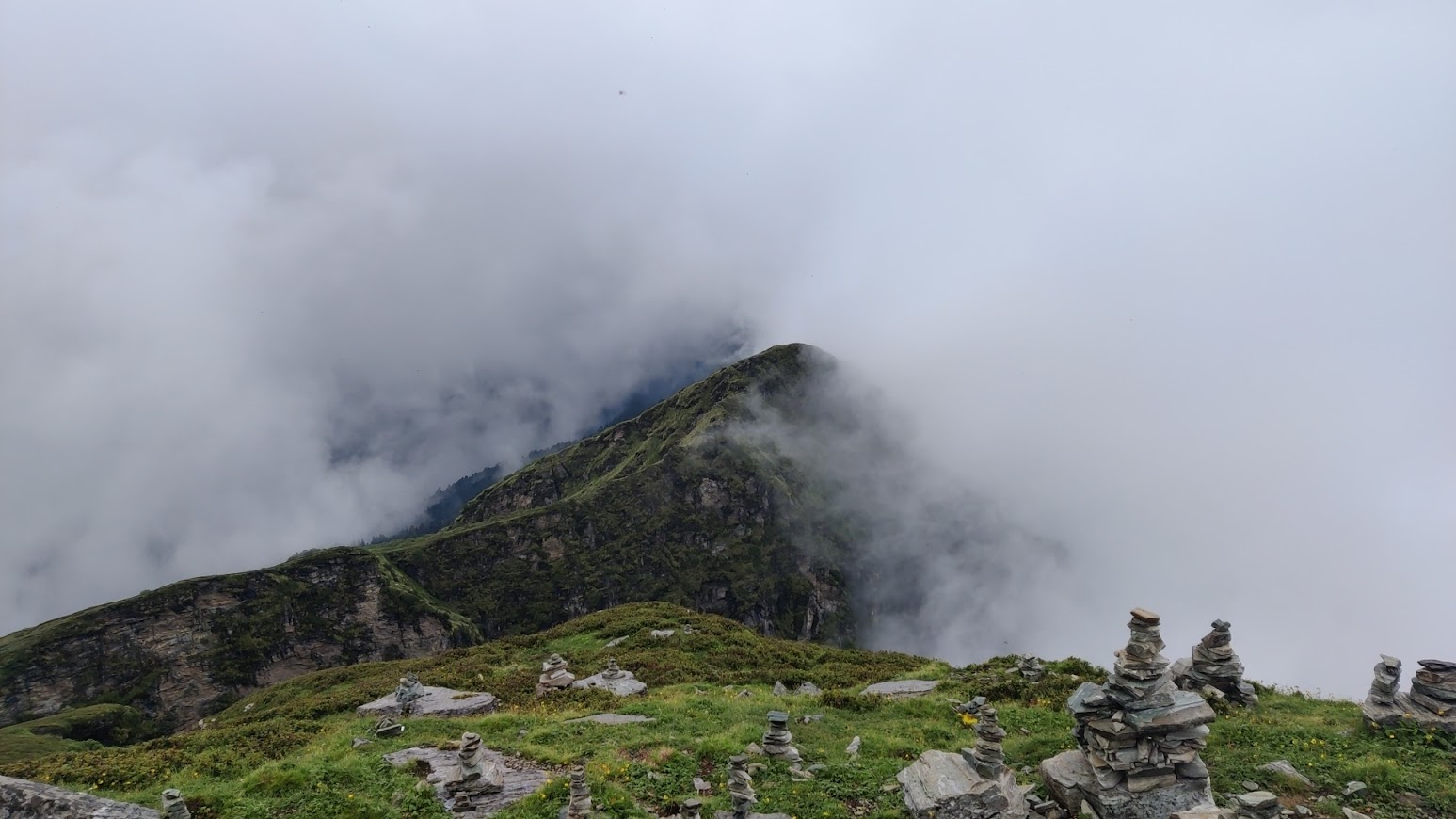Photo credit: K. Sangeetha
Lord of the peaks: Tungnath
The smiling orchids, buzzing bees and hymns of lord Shiva in Garhwali marks the season for the Tungnath temple yatra, the highest shiva mandir in the world. The temple comes second in the holy ‘Panch kedar’ (the holy pilgrimage for Hindus). The trek to the Tungnath Mahadev begins at Chopta, which is one of the many beautiful bugyals (meadows) in Uttarakhand. The village is well connected with motorable roads set amidst the lush green foothills of the Himalayas. The Chopta-Tungnath trek trails through the majestic Himalayan foothills and views of the mountain ‘Chaukhamba’. The trek is relatively small with a distance of about 5km and a gradual ascent which takes you to an altitude of stunning 3500 metres at Tungnath.
The folklore: the legends say that after the war of Mahabharata, the pandava came looking for lord shiva to seek mercy. Lord Shiva was deeply incensed about the war and didn’t approve of forgiveness and disguised himself as ‘Nandi’ (the holy bull). Bhima, the second eldest brother of Pandava, identified Lord Shiva as a bull and held onto him. The shiva thus disappeared in the ground, to later emerge in parts, with hump raised in Kedarnath, arms appearing in Tungnath, face showing up in Rudranath, torso raised in Madhyamaheshwar and hair appearing in Kalpeshwar and thus the ‘Panch Kedar’.
Chandrashila: The moon rock
‘The treasures claimed are not found easily’
At an astounding altitude of 3690 metres, Chandrashila summit stands erect. This vantage point is like the platter which serves everything as here you see the greatest mountain views of the grand Himalaya. You would not believe it but the summit lets you witness and see the Gangotri range of peaks, Mt Thalaysagar, the Kedarnath and the Kedar dome. On the other side, Mandani Parbat and Janhukut. The imposing Chaukhamba stands tall in the middle. Most of them are over 7,000 meters tall. On another side, you see, the Gauri Parbat, Hathi Parbat and Dunagiri. And then right ahead, standing against the skyline of India’s tallest mountain, Mt Nanda Devi. And if that’s not enough, to Mt Nanda Devi’s right, etched against the skyline are Mt Nanda Ghunti and Mt Trishul. Two of the most beautiful mountain summits in our country. Sounds unreal? The only way to this surreal reality is to see it yourself and believe in the incredible beauty of nature.
Buransh ke Phool
As the snow melts after the wild winters, the valley of Uttarakhand starts regenerating with the breeze of spring. The valley starts gaining its colors with the sequential blooms of ‘Buransh’, the Rhododendron flowers. The Rhododendron name comes from the Greek words “rodon”, which means “rose”, and “dendron”, which means “tree”, hence Rose Tree. The flowers stand out not only because of its spectrum of colors from pale pink to crimson red, but for its specular shape and size too. As you go up the hills, the Rhododendron trees change the size and colour of flowers according to the altitude. The blooming of these flowers is one of the most surreal wonders you will ever experience. This is also the state tree of Uttarakhand.


Pooja Shukla
Pooja Shukla is a Junior Research Fellow working with Dr Shravanti Rampalli. She is aForensic science graduate, so investigation is her fine hobby. Currently she is investigatinghow brain develops using stem cells. She loves plants, travelling and chai. If not working inlab, you’ll find her watching Anime.

